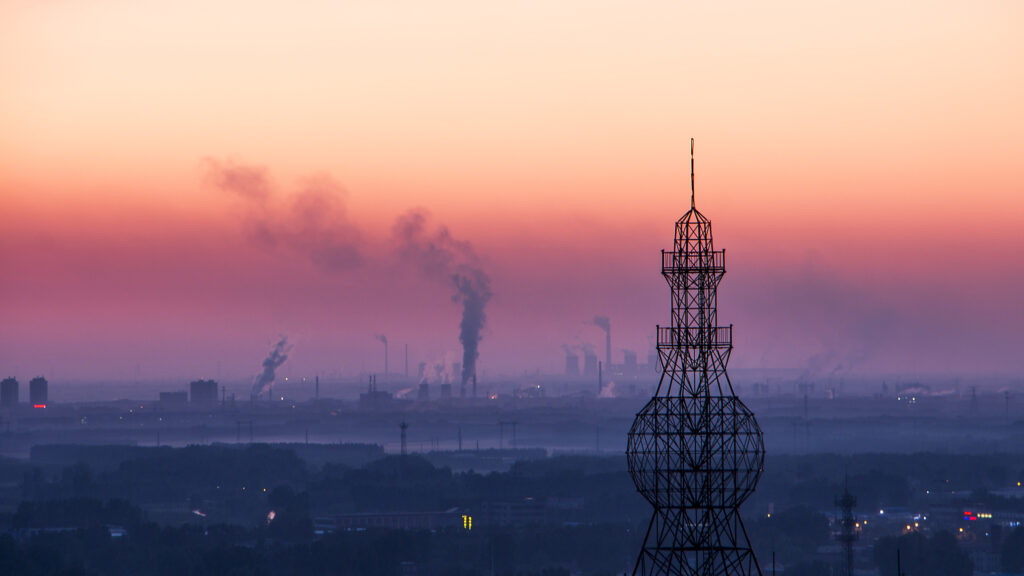Well, How About That! China’s Government Cut Steel Production
Share

It’s almost as if leaders in Beijing could help resolve the global steel overcapacity crisis if they wanted to.
Something very interesting is happening in China right now: There’s less steel being made.
That’s potentially a big deal. Since 2000, China has “massively and rapidly expanded its steel production capacity,” and now accounts for half of steel production globally. Massive is the key word here – China’s government utilized subsidies and other distortionary government support to expand its steel capacity by 930 million metric tons, a 418% jump since 2000.
All of that steel production led to global steel overcapacity. China, with a huge population and rapidly expanding economy, made way more steel than even it needed, and it flooded the global market with its excess steel products. Countries like India, Turkey, Iran, South Korea, Vietnam, Russia, and Brazil also used state subsidies and other trade-distorting support to expand their steel sectors, making the problem worse. But China is by far the worst actor.
In the United States, all that excess steel led to a crisis. Artificially cheap steel imports caused tens of thousands of layoffs and dozens of plant closures across the United States.
In many ways, this was the goal all along. China’s leaders want to dominate critical global industries. And China’s model of state capitalism means some companies don’t seek to make a profit on things like steel, but rather are aiming to drive competitors out of business so China can achieve a worldwide monopoly.
By 2018, steel overcapacity had become such a major threat to U.S. economic and national security that it led to the enactment of Section 232 trade action, which allowed the American steel industry to stabilize. Companies invested tens of billions of dollars into facilities and thousands of new jobs were created.
But Section 232 is a Band-aid. The global steel glut remains. Should Section 232 disappear without the larger global issue being resolved, cheap steel imports will surge back onto U.S. shores, once again putting American industry at risk. It’s vital that the United States and its allies work together to finally resolve global steel overcapacity.
Which is why it’s so interesting that China is suddenly making less steel. Here’s the Wall Street Journal with details:
China’s production of crude steel, half the world’s annual total, fell in July by the widest year-on-year margin since the 2008 global financial crisis. Early indicators suggest it might slip again this month. Culled by state inspections and other official curbs at mills nationwide, the usually prodigious flow that is often the subject of global trade and environmental tensions has fallen by 12.5 million metric tons—about twice Britain’s annual total—in July from May’s record high.
So… what’s going on here? The Journal notes the cuts are “delivering China twin triumphs: a show of policy leadership ahead of a major climate summit in Glasgow in November, and a demonstration that it can tamp down rising global commodity prices.”
To reiterate: China’s government is purposely cutting the country’s steel production. A lot of this is happening for show, as the Chinese government wants to prove that it is serious about curbing emissions (even as its steel industry is incredibly dirty and China is by far the world’s worst polluter).
But it also appears it wants to prove it can tackle steel overcapacity, too. Which is quite the shift!
Way back in 2016, former President Barack Obama used his last G20 summit to pressure China to curb its steel production. Out of that came the Global Forum on Steel Excess Capacity, which was convened to tackle the issue.
The creation of the forum itself gave China the benefit of the doubt, allowing it to argue the issue is a global crisis even if it was the country that needed to do the most work to solve the problem. But everyone went through the motions, and in response, China cut a little bit of its steel capacity.
Then China left in the forum in 2019, and its steel production increased in 2020. So much for diplomacy!
The Chinese government didn’t take any meaningful action then to curb its steel production because it didn’t want to. Many of its mills are outright state-owned, after all, and those that aren’t still fall under government control.
Well, it’s making the appearance of an effort now: The Wall Street Journal reported this week that China used “old-school Communist Party methods” to force many of the latest cuts through; the state-backed China Iron and Steel Association even held a special videoconference in which “dozens of steel bosses gathered via a Chinese conferencing platform, taking turns to vow allegiance to state objectives.”
All of this shows that China can cut its steel capacity if and when it wants to. And it also shows that China responds to international pressure. For whatever reason, Xi Jinping and Co. see it in their best interest right now to cut back steel production, and make sure the world knows about it.
To ultimately solve the global steel glut (not to mention climate change), China must keep production down, and lower it much further. And that’s only likely to happen if the Chinese government continues to see it in its best interest to decrease steel production.
What does that mean for the United States? America’s leaders need to ramp up work with allies and other countries to pressure China to tackle its excess capacity once and for all. Countries that maintain excess capacity of their own also need to make some cuts, too.
Until all of this happens, U.S. officials must be willing to stand up for our own steel industry. Section 232 must remain in place so long as the steel crisis remains unresolved. Otherwise, the United States stands to lose a critical industry and the hundreds of thousands of good jobs it supports.
